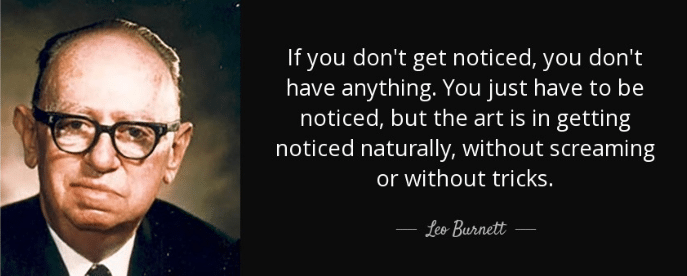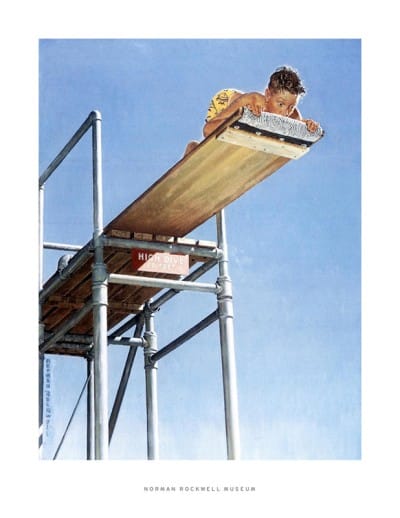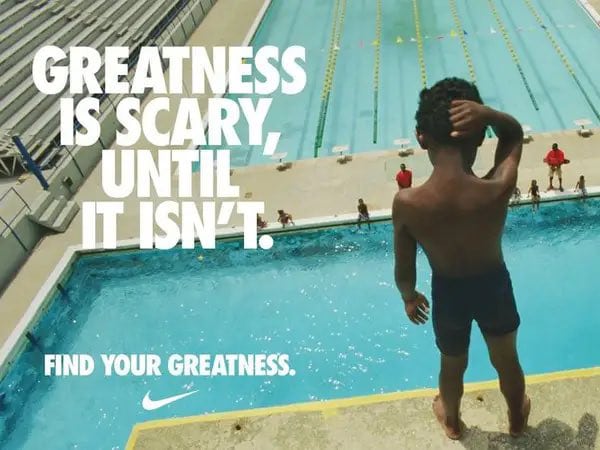
The great Leo Burnett made “Inherent Drama” the cornerstone of his advertising approach.
If you’re unfamiliar with Leo Burnett his agency created many of the most iconic mascots, slogans, and campaigns in American history, to include:
- The Jolly Green Giant.
- Tony the Tiger.
- The Marlboro Man.
- Starkist’s Charlie the Tuna,
- The Keebler Elves,
- Rice Krispie’s Snap, Crackle, and Pop
- The Lonely Maytag Repairman
So what is Inherent Drama?
Burnett never properly defined it in so many words, but I think of it like this:
- Every product or service is designed to address a buyer need.
- And behind every buyer need is a uniquely human dramatic situation, and the core of that dramatic situation is the inherent drama for the product.
- Basing your campaigns on that inherent drama will allow you to transcend feature and benefit, or USP-based “hard sells.”
And this intersects with a “Positively Good” approach to branding, where you focus on building trust with the audience instead of chest-thumping about your superiority over the competition.
The Maytag Repairman wasn’t pushing some unique feature, or hawking a particular model, or heaven-forbid, pushing a sale. Nope. He was dramatizing the dependability baked into every Maytag.
More importantly, inherent drama allows you to improve upon the image-based soft-sell by adding in inherently true human emotions and feelings of connectedness.
This is why Burnett proclaimed himself a proponent of the “warm sell.”
As he once said, “None of us can underestimate the glacier like power of friendly familiarity.”
Basically, the goal is to find the inherent drama, then use shared experiences and emotions to make your brand stick in people’s minds.
Yet while the term was coined by Burnett, a lot of the best inherent drama in advertising has been done by other agencies.
Take this beauty for AlkaSeltzer by Wells Rich Greene:
Talk about shared emotions and experiences!
And that was hardly a one-off:
The point is that these situations are practically archetypal to modern adult experiences while also being perfect expressions of the inherent drama for Alka-Seltzer.
And once you understand that connection between “shared emotional experiences as points of connection” and “inherent drama,” you can craft ads starting from either element.
For instance, you can look to art for expressions of dramatic, archetypal moments and create great advertising from that.
Take this Norman Rockwell painting:

(And, by the way, Rockwell’s paintings are an excellent source or “swipe file,” as his primary job was to illustrate archetypal American moments for The Saturday Evening Post.)
Who hasn’t experienced a moment when they were intimidated or scared by a challenge?
Everyone can relate to that.
Now look at this Nike Ad:

If anything, the ad improves on the Rockwell painting by providing a first-person perspective to the moment.
And it connects the inherent drama in sport — and sportswear (presumably Nike’s) — to this archetypal experience.
That’s powerful advertising.
So what’s in your ads?
Inherent Drama? An appeal to the positively good?
Or are your ads attempting to chest thump about how much better you are than everyone else?
If it’s the latter, why not take a tip from Leo Burnett and build your brand on something truer, friendlier, and warmer?
- Are You Paying for Too Much for the Wrong Keywords? - July 15, 2024
- Dominate Your Market Like Rolex — 4 Powerful Branding Lessons - July 3, 2024
- Military-Grade Persuasion for Your Branding - June 25, 2024
